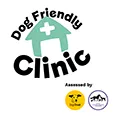Treats and Hidden Threats: Protecting Your Dog from Xylitol Poisoning
We love sharing the good times with our dogs, and sometimes that means indulging them in a special treat from time-to-time.
However, together with the fun, it's crucial to be aware of hidden dangers that can be in seemingly harmless snacks. One of those dangers is xylitol, a sugar alcohol commonly used as a sweetener in many everyday products, which is perfectly safe for humans, but extremely toxic to dogs, even in small amounts.
This blog post aims to provide you with the knowledge to keep your dog safe from xylitol poisoning. We'll delve into what xylitol is, why it's dangerous for dogs, the signs and symptoms of poisoning, and the crucial steps to take if you suspect your dog has ingested xylitol.
The deceptive sweetener: Xylitol and Its dangers for dogs
Xylitol is a sugar alcohol found naturally in small amounts in some fruits and vegetables like plums, strawberries and cauliflower. However, commercially produced xylitol is extracted from various plant materials like birchwood or corncobs and it's widely used as a sugar substitute in various products due to its sweetness and ability to add bulk without containing calories.
Therefore, when a dog ingests xylitol, their body misinterprets it as sugar and releases a large amount of insulin. This rapid insulin release leads to a sudden drop in blood sugar levels (hypoglycaemia), which can have severe consequences for your dog.
The severity of xylitol poisoning depends on the amount ingested and the size of your dog. Smaller dogs or those with underlying health conditions are more susceptible to experiencing life-threatening complications.
Warning signs: Recognising xylitol poisoning in your dog
The symptoms of xylitol poisoning in dogs can appear quickly, often within 30 minutes of ingestion. Being familiar with these signs can make a significant difference in getting your dog treatment immediately:
- Vomiting: This is a common initial sign, and the vomit may contain traces of the xylitol-containing products.
- Diarrhoea: Your dog may experience diarrhoea, which could be bloody in severe cases.
- Lethargy: Xylitol poisoning can cause your dog to become sluggish, disinterested in their surroundings, and lacking in energy.
- Weakness: Muscular weakness and difficulty standing or walking are potential signs.
- Disorientation: Your dog may seem confused, wobbly, or have trouble navigating familiar spaces.
- Tremors: Seizures and tremors can occur in severe cases of xylitol poisoning.
- Loss of coordination: This can manifest as difficulty walking or maintaining balance.
- Drooling: Excessive drooling can be a symptom of nausea or discomfort associated with xylitol poisoning.
- Coma: In severe, untreated cases, a dog may experience seizures leading to a coma.
If you notice any of these symptoms after your dog has potentially ingested xylitol, do not hesitate to contact your vet immediately. Every minute counts when it comes to treating xylitol poisoning.
Taking action: What to do if you think your dog ate xylitol
Time is of the essence when dealing with xylitol poisoning. Here's what to do if you suspect your dog has ingested xylitol:
- Contact your vet practice immediately. Don't wait for symptoms to appear. The sooner your dog receives treatment, the better their chances of a full recovery.
- Gather information. If possible, try to identify the product your dog may have eaten. Note the amount consumed (if possible) and the time it happened. This information will be crucial for your nurse or vet in determining the best course of treatment.
- Do not induce vomiting unless instructed by a veterinary professional. Some xylitol-containing products may also contain other harmful ingredients and inducing vomiting could worsen the situation.
- Follow instructions from your nurse or vet carefully. Depending on the severity of the situation, your vet may recommend inducing vomiting at the clinic, administering intravenous fluids to stabilise blood sugar levels, or providing other supportive care.
Remember: Early intervention is key! The quicker you act, the better your dog's chances of a full recovery after ingesting xylitol. By taking these precautions and knowing what to do in case of an emergency, you can help keep your dog safe from the dangers of xylitol poisoning.
Don't hesitate to reach out
By understanding the dangers of xylitol and taking proactive measures, you can ensure safe and enjoyable treats for your dog. Remember, always read labels carefully, keep xylitol-containing products out of reach and supervise your dog around potentially harmful items.
Learn about nutrition advice here.
Don't forget that unexpected emergencies can happen, even with the most vigilant pet parent. Consider pet insurance as an additional layer of security for your dog's health.
Contact Brentknoll Vets in Worcester today to learn more about your pet’s nutrition and advice for keeping them happy and healthy!








